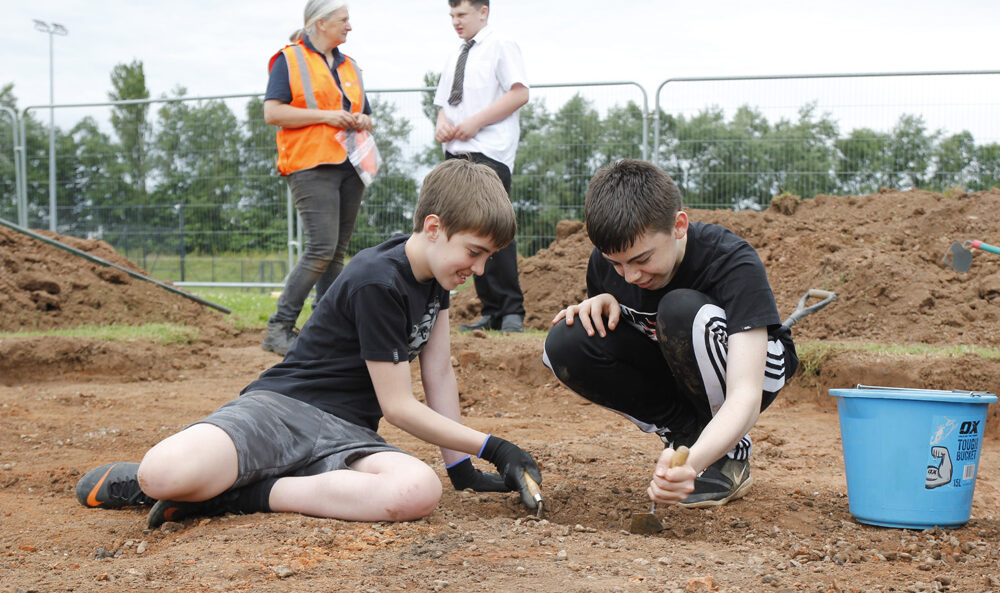Delivered by William Howard School
The humanities department at William Howard School ran an archaeological excavation on the school field in the run up to the end of term. School staff, students, volunteers and staff from Wardell Armstrong worked through the hottest days of the year to discover what was buried just inches beneath the soil. Unknown to many, the western part of the field was excavated in 1963, when a series of Roman tile and pottery kilns were found, along with a terracotta lamp and 800 fragments of tiles and pottery. The finds dated between AD 100-125, and the kilns were probably operated by an auxiliary unit living in the Stanegate fort at Brampton Old Church. In 1964 a hoard of ironwork was found in a deep pit. The assemblage comprised 61 items including agricultural tools and fittings.
Two types of geophysical survey were undertaken in 2019 to see if anything remained of the kilns and to identify any other features of archaeological interest. Resistivity and magnetometry surveys were carried out by staff from Wardell Armstrong and Grampus heritage, who were assisted by students from William Howard School. The results revealed the remains of some of the kilns found in 1963, and a range of previously unidentified features in the eastern part of the field. With funding secured from a HW1900 Community Grant a plan was devised to open two trenches, the first to uncover a probable kiln that had not previously been excavated, and the second to unearth one on the many unidentified ‘geophysics hits.’
The results of the current excavation were unexpected, and surprisingly not a scrap of Roman pottery was found! Instead of revealing a Roman tile kiln of stone construction, trench one revealed the remains of a kiln comprising eight parallel rows of bricks on a burnt clay base. The remains of the kiln were covered by a brick-filled demolition layer, suggesting that the kiln was used to manufacture local brick. Towards the end of the excavation a clay tobacco pipe bowl was found in the demolition layer, probably dating it to the 1680s. The findings in trench two were equally surprising; a number of linear stone spreads were removed to reveal the foundations of a wall. The wall was made of rough limestone blocks, mortared in places, on top of river cobbles. A small fragment of tobacco pipe suggests a 17th date.
In all, over 50 staff and students from the school took part in the excavation, and were involved in digging, finds washing and learning how and why we make detailed excavation records. Approximately 1000 school students visited the field during the excavation, and all history classes received an ‘introduction to archaeology’ lesson followed by a site tour. Many volunteers assisted and site tours for the public took place throughout the day each Saturday.
The dig will be followed up with a display at William Howard School, a detailed excavation report and a public talk for the Brampton Local History Group (scheduled for April 2023).
